Co Louth or as the club is widely known, Baltray, is synonymous with the East of Ireland Open Championship. The club and the Golfing Union of Ireland established this event in 1941 and it has been held at Baltray every year since. The first winner was JB Carr; he would go on to win the event 11 more times! That is not all, Carr won an additional 25 Irish Championships, 3 Amateur Championship crowns, played in 11 Walker Cups and captained the side twice in 1965 & 1967. Carr played in the 1967 Masters with defending champion Jack Nicklaus; he made the cut but Jack did not. The next year he made the cut after being paired with Arnold Palmer; Arnold failed to qualify for the weekend. Thankfully, Sam Snead made the cut in 1969! In 1991 Dr Carr was elected Captain of the R&A, the first Irishman to be so honoured. Fittingly, Joe Carr was posthumously inducted into the Golf World Hall of Fame in 2007.
The Great Joe Carr
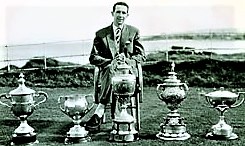
One cannot visit Co Louth GC without being confronted by the exploits of the prodigious Philomena Garvey, a long-time member of Baltray. Winning 15 Irish Close Championships between 1946 and 1970 (she wasnít eligible to compete between 1964 and 1967 due to her status as Irelandís first female professional) secured Philomenaís legacy as the greatest female Irish player to date. Remarkably, she never lost in The Close finals, but only secured one victory after having reached the final of five Ladies Amateur Championships.
Garvey was selected seven times to represent GB&I in the Curtis Cup. Controversy came in 1958 when Philomena was selected for the matches, but refused to wear the Union Jack badge. After attempts at a compromise whereby an old blazer would be worn had failed, Miss Garvey did not play. Later Curtis Cup logos would include the tricolour. Philomena retired from international golf after her final Close victory in 1970 at Royal Portrush.
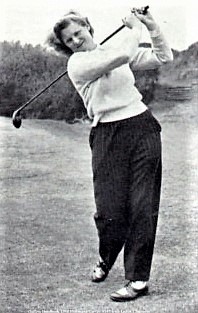
Despite some serious alterations to the 18th, renumbering the holes due to a change of clubhouse location (the new and current house was once a hotel) and small changes here and there, Baltray is one of Tom Simpsonís finest examples of work remaining in GB&I. In 1938, working with Molly Gourlay (who had a very interesting and well respected life in golf), the pair seemed to totally transform the course by using existing corridors and moving most of the greens and tees. The course runs over three different types of land; dunes, low lying dunes and flat land in fairly equal measure. One of the clever aspects of the design is the shaping. Simpson seemed more willing to shape the greens in a more dramatic fashion on the dunes holes. The fall-offs around greens are so perfectly accomplished they must be by the hand of man! Of course, it is the dune holes which are most memorable and #s 3, 5, 7 & 14 are the standouts. However, some of the holes over quieter land also register firmly in the memory and include #s 4, 6, 15 & 16. While flat holes can greatly enhance a design, a half dozen of less inspirational holes are perhaps a few too many, though Baltrayís take some playing.
Simpson principles of design...well some anyway.

The first is one of the flatter holes and doesn't trigger feelings of admiration, though tough it is. In this photo taken near the second tee, the reader gets an early glimpse of the subtle run-offs featured on many of the greens.
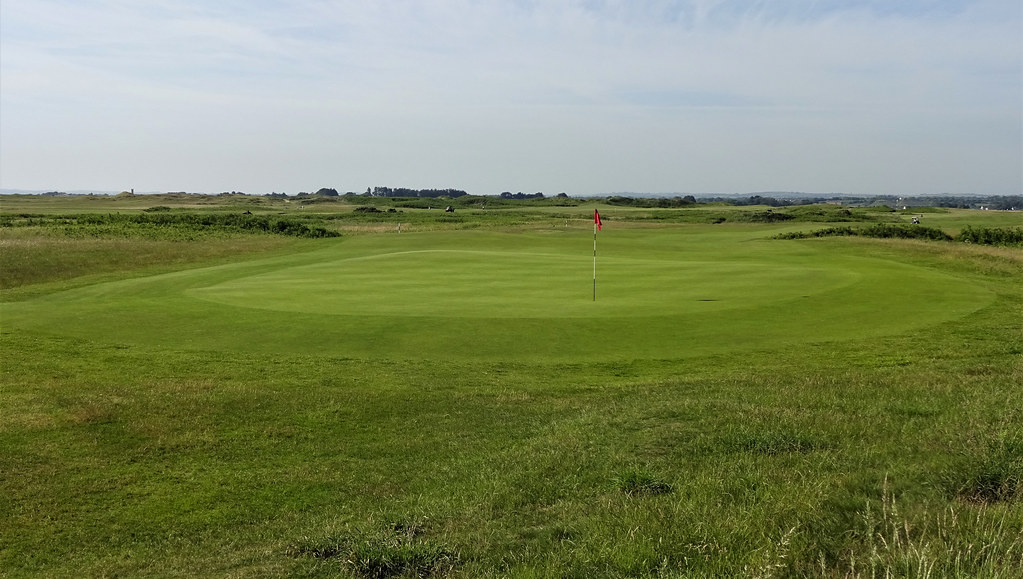
The par 5 second covers the same sort of ground, but playing downwind this hole can be reached in two. Uncharateristically of major links, there is relatively quite a bit of space to cheat on the inside lane. In general, the rough is kept in check which makes for a pleasant day's golf.
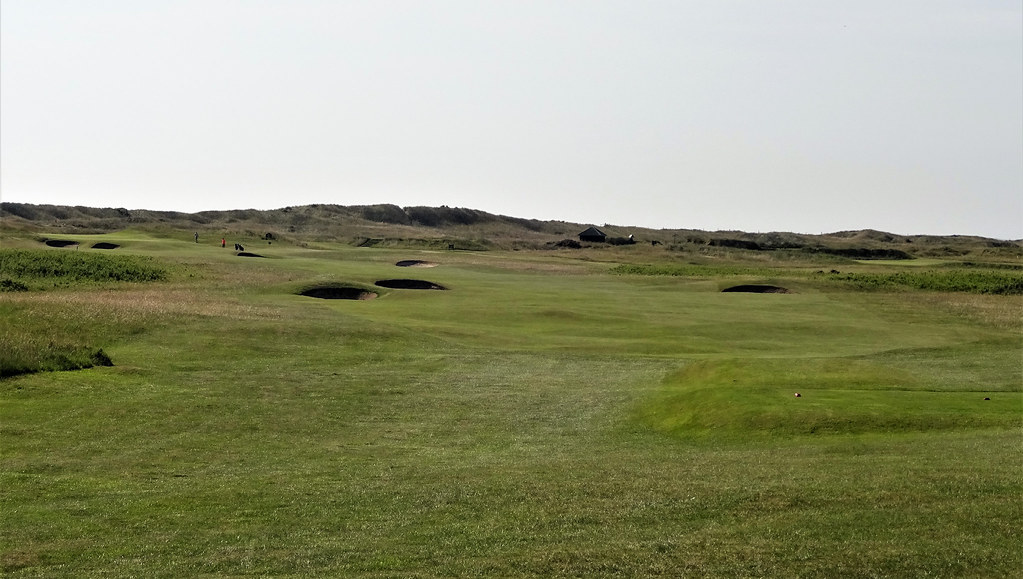
One of the great advantages of raised greens is not quite knowing where the hole is. In this case, located at the rear of the green, it is easy to come up too short and be left with a putt over the tier.
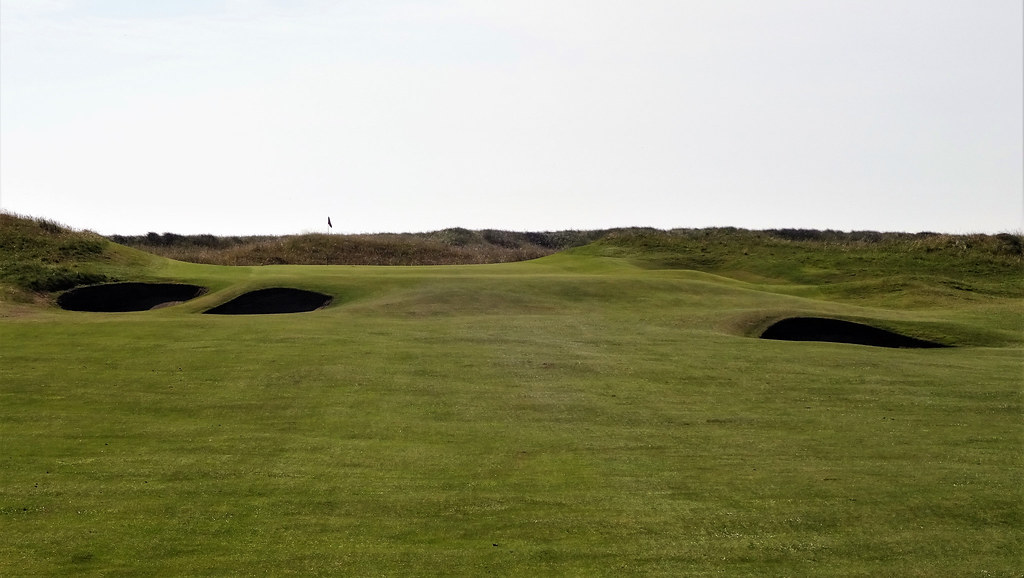
Baltray begins in earnest on the 3rd. This three-shotter is tougher to reach in two than the previous hole, but if one is going to give it a go it is imperative to stay right off the tee. The approach is blind and there is a sharp drop-off on the left side of the green which, as I have witnessed, can be a depository for loose putts!
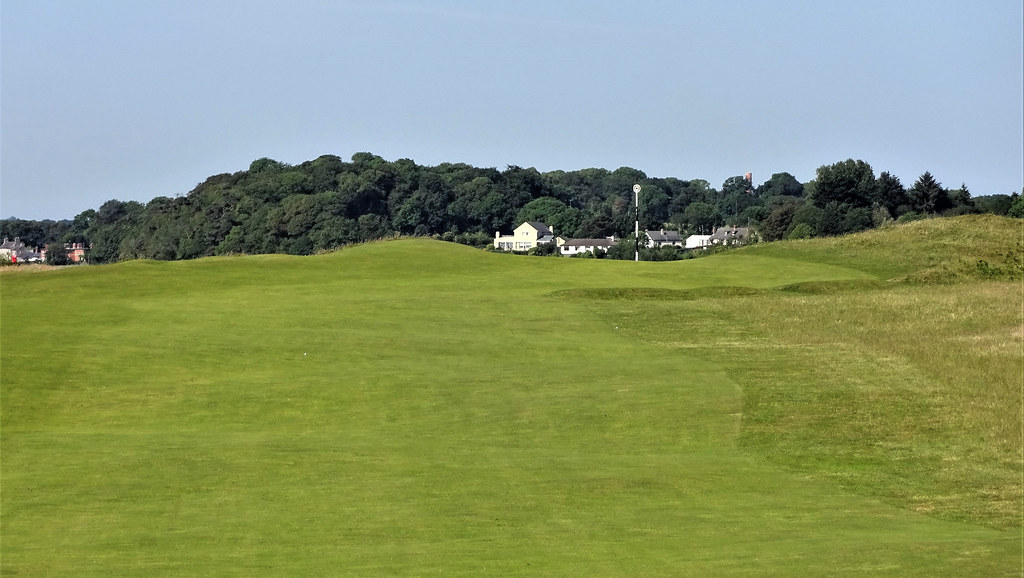

The massive fall-off area as seen from near the 4th tee.

More to follow.
Ciao